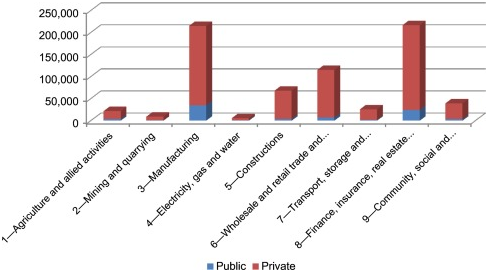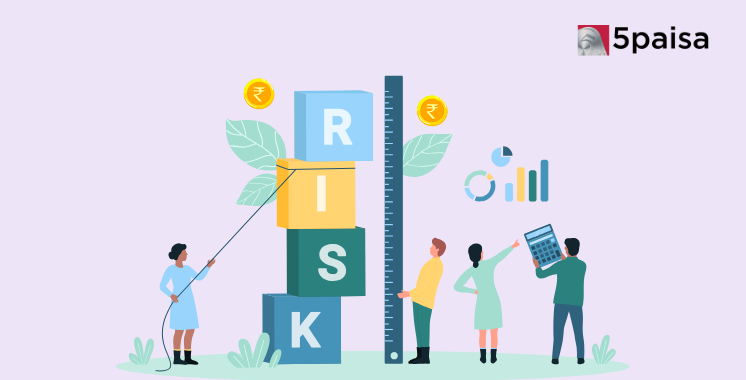Intraday in Stocks vs 24x7 Crypto Trading: Which Actually Works for Retail Investors?
Mixed Economy in India

Ever wondered about the basics of the economy of your own country? If you haven’t, it's time to wake up and be aware of the systems followed by the economy you live under and understand its need and foundation. The Indian economy is essentially the world's largest growing economy and is hence a matter of intrigue to several people outside the country; as the economy of the country keeps on tremendous growth, it still suffers through ever-persistent drawbacks such as poverty and systemic inequality. Read on to learn more about the topic.
History of India's Economic System
Pre-Independence, India used to be a “laissez-faire” economy. Post-independence, India underwent an urgent need to increase the workings, output, and productivity of several sectors that include the agricultural sector, employment of the citizens, reforms in terms of land and living conditions, and eradication of poverty. To achieve all this, the country had to opt for a suitable economy to overcome the drawbacks of colonial rule.
Consultations from various world leaders and economics were taken into consideration whilst also analyzing the developmental patterns of countries such as the USA, Japan, Russia, France, etc., in order to settle on the economic system for India. Being an agrarian economy, during the first five-year plan, huge importance was given to agricultural resources such as irrigation equipment, dams, etc. all the while, importance was also given to industries and technological institutes. However, the rate of the country’s economic growth was slow due to multiple factors, such as a lack of capital formation or the geopolitical tensions due to the cold war. The rate of growth of the economy only improved in the time frame of FY 1980s-89, wherein the country saw an annual rate of 5.5%.
What is a Mixed Economy?
A mixed economy is a system wherein the public and private sectors coexist under one umbrella that combines the advantages of both socialism as well as capitalism. The government intervenes in the workings of the private sector whenever necessary. The public and private sectors follow a similar economic plan, but the private sector is a crucial wheel of the economy.
There are essentially three types of economic systems, these include:
1. Capitalist Economy
In a capitalist economy, the consumers have the free will to choose what they consume; however, the priority in manufacturing is given to the goods that perform well in the market. The chief market forces are supply and demand.
2. Socialist Economy
In a socialist economy, good production and manufacturing decisions are made by the government. It is up to the government to decide how to produce and supply the goods to the public.
3. Mixed Economy
In a mixed economy, both public and private sectors operate side-by-side. The authority decides how and what to manufacture in a mixed economy.
Features of Mixed Economy in India
The important features of the mixed economy in India are:
● Coexistence of the Two Sectors
India is a mixed economy, wherein the public and private sectors coexist. The government controls the functioning of both sectors while also providing them with the proper and necessary resources in order to operate successfully. While the private sector consists of cottage industries or small-level industries that operate with consumer goods and agriculture, the public sectors handle larger-level industries that handle atomic energy, heavy engineering, defense equipment, etc.
● Economic Plan
Certain planning is to be done by the hands of the government in order to draw out the operations and achieve the set goals. This applies to both private and public sectors. They need to coordinate with the government's defined roles and responsibilities.
● Economic Welfare
In the case of the public sector, they make reforms in order to implement large-scale employment, and the private sectors regulate financial policies. All these decisions are a way to impose the economic welfare of the country and its citizens.
● Liberal yet Controlled
The government encourages free economic actions and also imposes rules in order to control the environment at the same time.
Private and Public Sectors in India's Mixed Economy
Both the private and public sectors in India's mixed economy are essential to the growth and advancement of the nation's economy. Privately owned companies make up the private sector, whereas government-owned businesses and enterprises make up the public sector.
The private sector plays a major role in India's mixed economy by creating jobs, boosting economic expansion, and encouraging innovation and technological development. The private sector dominates industries like services, industry, and agriculture and has been essential to the development of the nation. On the other hand, the state sector is crucial in the delivery of necessities like infrastructure, healthcare, and education. Additionally, the public sector is essential to critical industries like rail, atomic energy, and defence.
Over time, the mixed economy of India has changed, moving towards increased private sector involvement and liberalization. Privatization, disinvestment, and liberalization are just a few of the policies that the Indian government has put into place to encourage the expansion of the private sector. However, the public sector still plays a significant role in India's mixed economy, especially in sectors like infrastructure development and social services, where private sector participation is relatively low.

Advantages and Disadvantages of India's Mixed Economy
Advantages
● There exist more economical and individualized working conditions.
● Job allocations in the Indian economy come with their own added benefits that include the general welfare of the employees. These welfare conditions may include the minimum wage, housing privileges etc.
● The resources in the Indian mixed economy are utilized optimally via economic planning.
● In a mixed economy, the consumer practices the right to purchase any product of their own free will.
● The laborers working for the industrialists have a high chance of being exploited. This, however, is not the case when it comes to a mixed economy since the government has to intervene and ensure set wages and rules for the treatment of laborers.
Disadvantages
● When it comes to the public sectors of India, they tend to perform inadequately because of the inherent corruption and discrimination in the system.
● Private sectors may underperform due to excessive rules and restrictions imposed on the employees.
● Private sectors may also be under attack as the industry in itself may face the threat of nationalization
● Government employees that work in the private sector can manipulate governmental policies to their advantage and try to accumulate money.
● Since most of the economy runs on the private sector, they are given more favors; hence, they tend to earn more profit which is at times against the national planning system laid out by the government.
Role of Government in India's Mixed Economy
The role of the government in a mixed economy is quite involved and crucial to the economy and its growth. Since India is a mixed economy, the following are some of the lists of roles performed by the government in a mixed economy:
● The government ensures the availability of resources such as food and medicines to the ones in need.
● It is the government that takes the initiative and provides funds in order to build infrastructures like bridges, roads and railways in order to ensure development.
● Formulation of industrial policies in order to ensure growth in industries such as IT, Biotechnology and renewable energy, among others.
● Welfare measures that include subsidies, healthcare etc.
● Foreign trade is also initiated by the governmental authorities while also providing trade incentives and negotiating agreements.
Foreign Investment in India's Mixed Economy
Foreign investments have played a crucial part in keeping the Indian economy alive since the 1990s. The process brings the country more job opportunities, technological development and overall economic growth.
The government formulates FDI or foreign direct investment policies in order to attract funding. These policies include streamlining processes and offering tax relief. This FDI policy, furthermore, ensures investments coming in for a variety of Indian industries that include telecommunication, media and defense. Foreign investment encourages globalization by entering the global job markets and getting access to that level of opportunity and knowledge.
Some challenges faced by foreign investment include delays in project completion, land acquisition, local industries, environment, etc.
Impact of Globalization on India's Mixed Economy
Foreign Investments opened up the gates of globalization in India back in the 1990s, and this brought into the country an influx of technology and trade. It led India through a series of economic changes that included an increase in job opportunities and access to the global market technology with growth in key sectors that include IT, pharma and automotive. Globalization has, furthermore, brought in high-class architecture in areas such as airports and highways.
Like any other phenomenon, however, globalization came with its own downside when it came to the exploitation of labor, discrimination and environmental degradation. It also led to an increase in westernization that brought about a decrease in Indian culture, traditions and roots.
Challenges Faced by India's Mixed Economy
There is no doubt that the Indian mixed economy faces some, if not many, challenges on its own. Some of those include poverty, systemic inequality, unemployment and pollution. Among these, the chief challenges are poverty and inequality. There is a persistence in the Indian poverty rate and income inequality even after the overall economic growth. Some of the measures taken by the government to overcome these challenges are welfare measures that include access to education, healthcare, etc.
Unemployment and the increase in environmental pollution are significant drawbacks faced by the Indian mixed economy. Although the promotion of entrepreneurship and sustainable energy sources are in place, the growth seems far off as of yet.
- Flat ₹20 Brokerage
- Next-gen Trading
- Advance Charting
- Actionable Ideas
Trending on 5paisa
01
 5paisa Research Team
5paisa Research Team
Indian Stock Market Related Articles
Disclaimer: Investment in securities market are subject to market risks, read all the related documents carefully before investing. For detailed disclaimer please Click here.

 5paisa Research Team
5paisa Research Team




